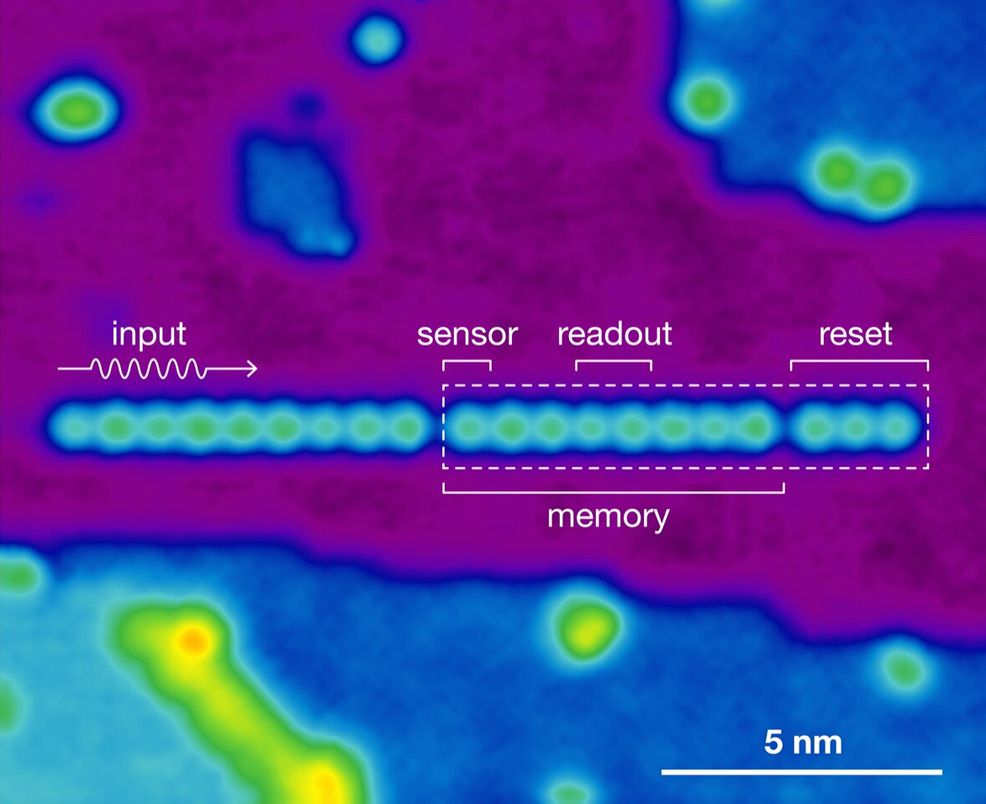
29th May 2020 A sensor only 11 atoms in size Researchers from Delft University of Technology, Netherlands, report the creation of a sensor only 11 atoms in size, which is able to capture magnetic waves. The almost unimaginably tiny device, pictured below, consists of an antenna, a readout capability, a reset button and a memory unit. The team at Delft hope it can be used to learn more about the behaviour of magnetic waves, which could help to improve the efficiency of electronics in the future. In theory, electronic data processing can be made much more efficient by switching to spintronics. Instead of electrical signals, this technology makes use of magnetic signals to transmit data. Unfortunately, magnetism tends to get extremely complicated, especially at the atomic scale of modern computer chips. Magnetic waves are like millions of compass needles performing a complex, collective dance. Not only do the waves propagate extremely fast, causing them to vanish in mere nanoseconds, the laws of quantum mechanics also allow them to travel in multiple directions at the same time. To study these rapid oscillations, researchers developed the minuscule device seen here, which consists of just eleven atoms.
The central idea of the invention is that the device instantly detects a passing magnetic wave and "remembers" this information. "Compare it to a mouse trap," explains Sander Otte, from the Department of Quantum Nanoscience at Delft. "A mouse is typically too fast and too small to capture by hand. But a mouse trap reacts very quickly and then holds the mouse in place." The team connected their device to magnetic atomic wires through which magnetic waves were sent. Although the test wires were very short, they yielded promising results: the waves moved very peculiarly, as one would expect from quantum mechanics. The next step will be to apply this technique to more complicated circuits, to obtain greater insight into the behaviour of spintronics. So, in addition to computing, what other real-world applications might emerge for a sensor on this scale? Perhaps trillions of them, printed on a robot's surface, could be used as a high-tech "skin"? Or maybe the devices, embedded in the outside of a spacecraft, could detect breaches? For now, though, the research is at an early stage and the technical requirements of producing these sensors are too extreme, requiring 1K at ultra-high vacuum (10^-10 millibar) and the use of magnetic fields of up to 1.5T. "However, if there is a way to make these sensors in less extreme conditions, this could build the way towards spintronics: electronics without any heating," explains the study's lead author. "It would be amazing (and possibly 'only' 30 years from now) if that is what future computers used for their processing: it's very energy efficient and very space-efficient. However, time will tell whether such developments are feasible."
Comments »
If you enjoyed this article, please consider sharing it:
|







